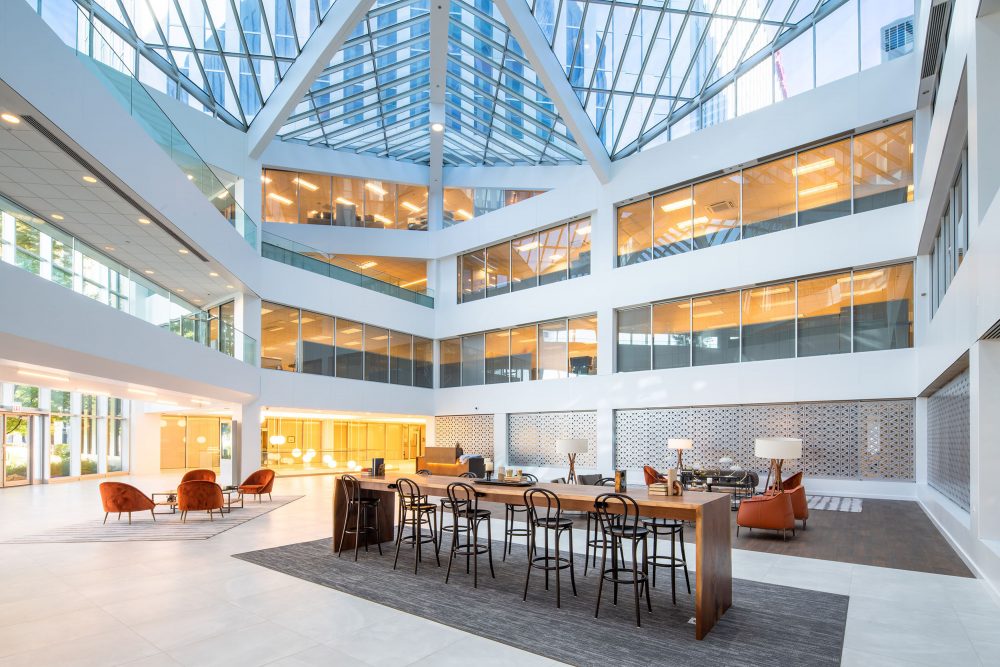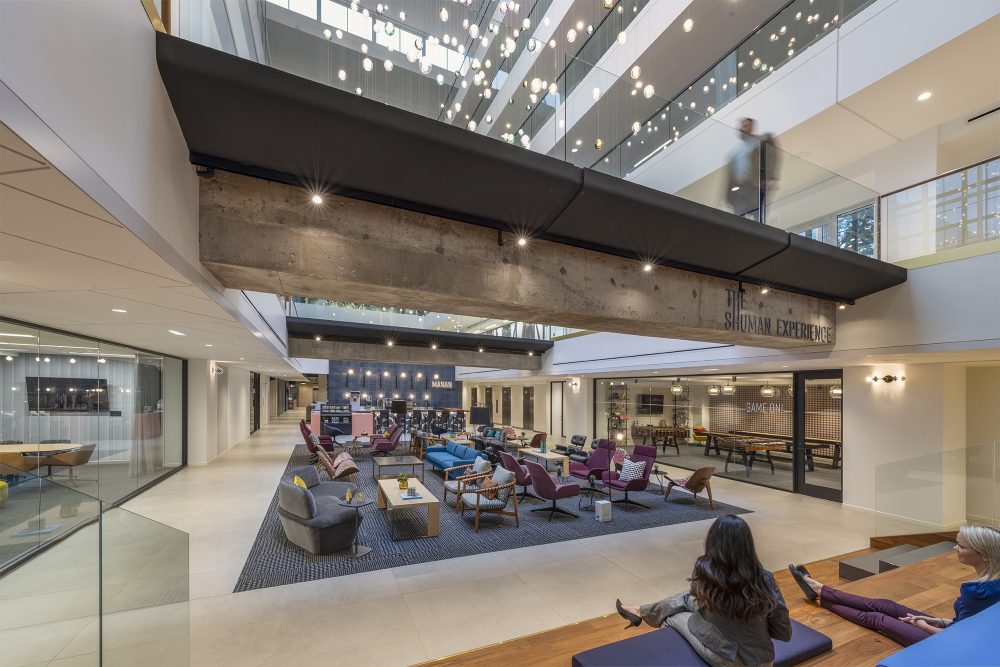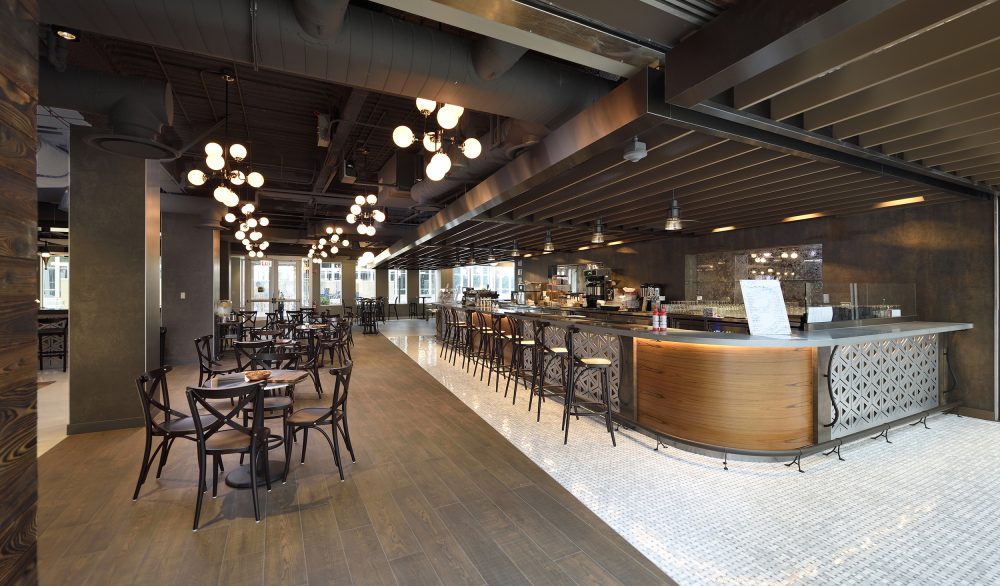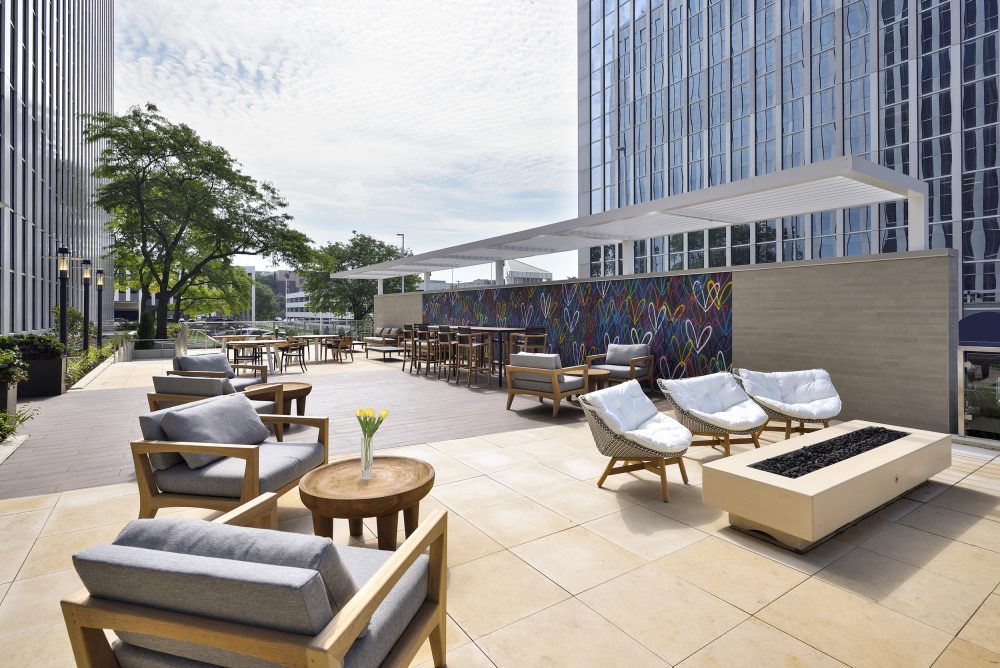“Expectations are rising for suburban properties, and we expect 2020 to be the year that building owners rise to meet them.”

Amenitization of office buildings isn’t a new trend – but it’s increasingly making a meaningful impact in the suburbs. The socially activated workplace has become a table-stakes expectation of today’s talent pool in major city centers. More recently, that expectation has spread to the surrounding suburbs. As millennials and Gen Z employees together have become the majority of the workforce, suburban office buildings have begun incorporating more amenities to accommodate these new standards.
Why suburban social activation is so important
When a suburban building is surrounded by a moat of parking spaces on the outside, there’s an even greater need for a socially activated ecosystem within the property itself. The building environment that new tenants prefer is a connected environment with a Wi-Fi lounge, coffee bar and communal meeting spaces, rather than a building that may be beautiful, but requires employees to get in their car for basic functions like grabbing a bite to eat or a coffee with a coworker.
Many urban office buildings have a natural benefit: the luxury of walkable surroundings offering the convenience of nearby dry cleaners, retail and restaurants. In the suburbs, landlords are winning new tenants when they offer spaces that encourage social experiences, but it’s necessary to consciously curate a new set of amenities within the property itself that might not have been necessary when the property was originally designed.
No matter where it’s located, a successful socially activated office building will provide tenant amenities that encourage interaction and possible collaboration among tenants, including (but not limited to): a tenant lounge, game room, fitness center, coffee/drink bar, cafeteria or restaurant options, conference center, outdoor lounge space and functional lobby. Offering these options within a property becomes more critical the more remote the property is from nearby locations.

Where to start social activation
Many suburban landlords are at the onset of the social activation journey are beginning to consider how to offer all the amenities tenants crave, and where to start. We’ve seen the beginning of this shift in buildings like The Shuman in Naperville, Illinois, which offers tenants all of the above major amenities to conveniently cater to its tenants’ needs. Located along a corridor of office buildings, getting to the nearest restaurant, café, gym or other recreational space means hopping in your car and leaving the office campus. That’s where a socially activated amenity space comes in.
Franklin Partners, the building owners at The Shuman, understood how to incorporate plenty of spaces and amenities to accommodate tenants’ needs for collaboration, socializing and wellness. A communal staircase that connects the lobby to the amenity floor doubles as seating space and leads into a lounge with additional seating. Both of these features serve as informal spots for tenants to meet up for a meal or a quick change of scenery for a meeting – and a conference suite provides more formal meeting and collaboration options.
The cafeteria and coffee bar provide high-quality food and drink options for tenants not wanting to leave the campus during the day. Tenants are also encouraged to hang out in the building after hours in the game room and golf simulator, or exercise before, during or after work in the fitness center. Likewise at President’s Plaza, another office building in the Chicago suburb of Rosemont (near O’Hare International Airport), the coffee bar that offers adult beverages in the afternoon and evening was prompted to extend its hours well past 5 p.m., thanks to its popularity with tenants.

Take advantage of the suburbs’ primary resource: outdoor space
In addition to indoor building features, bringing the outside to the forefront poses an especially key opportunity in the suburbs. Many office parks offer significant open spaces filled traditionally with beautiful and abundant but under-used landscaping; however, the great outdoors can be made easily accessible and bring value to the building and its tenants. For example, installing NanaWall systems that open up common areas or tenant spaces at ground level to the outside can expand the footprint and value of indoor lounges. Add ample and comfortable outdoor seating, and they become popular gathering spaces.
Glenstar, President’s Plaza’s building owners, turned a once-unused parking lot into the new terrace that’s connected from the indoor lounge space. Multiple seating areas, fireplace features and a colorful mural bring the outside space to life to provide tenants with the opportunity to recharge in the fresh air. The benefits of working outside – or just taking time to go outside during the workday – include increased happiness and productivity, higher energy and stress relief. The suburbs certainly have an advantage here, with generally more greenery and cleaner air than a downtown environment.

Bringing elements of the outside in can also improve wellness for tenants. Biophilic features like indoor trees, green walls, atrium spaces, skylights and natural flooring can bring elements of the outside in for added wellness benefits. The atrium at President’s Plaza brings plenty of natural light into the lobby and provides a direct view of the sky. Lobby seating allows tenants to socialize and take in the sunlight even when the temperature prevents outdoor time. At The Shuman, the atrium brings natural light through the entire five floors as well as the lower level, where the ample seating on the staircase and in the lounge allow for tenants and guests to meet up in the bright and airy social space.

Prioritizing based on tenant behavior
Every building is different, so it’s important to look for opportunities that will be appreciated by your current and likely future tenants, and that will also produce return on investment for the building owner. If there are robust nearby food options, perhaps your capital spend is better used adding fitness or conference amenities. These amenities can be enhanced by mobile apps that allow tenants to book conference space or reserve a spot in a fitness class. Other service-oriented amenities can also be delivered using mobile phone apps, like dedicated ride share services and dry-cleaning delivery, requiring a reduced capital spend – but perhaps a heavier lift from property management staff.
Expectations are rising for suburban properties, and we expect 2020 to be the year that building owners rise to meet them.

